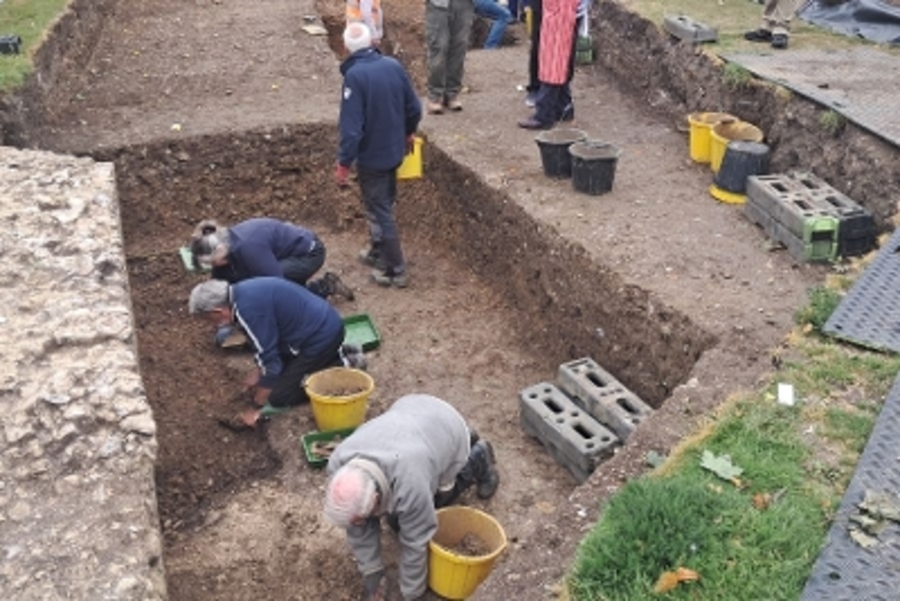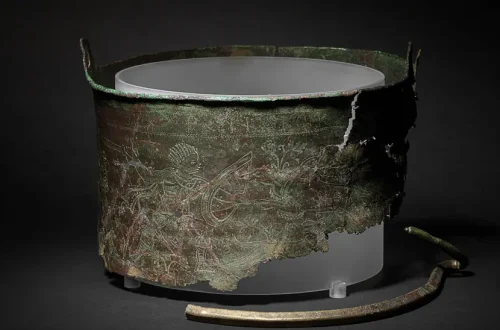A recent archaeological excavation in Chichester’s Priory Park has revealed the remains of a stone tower, known as a barbican, which once defended the city’s Norman castle. The discovery, made during a two-week dig led by Chichester District Council’s archaeologist James Kenny in collaboration with the Chichester and District Archaeological Society (CDAS), sheds new light on the city’s 11th-century history.

The excavation, which concluded in early June 2025, focused on an area north of The Guildhall in Priory Park. Guided by geophysics and ground-penetrating radar scans conducted since 2022, the team uncovered the remains of a substantial stone structure measuring approximately 6 metres by 10 metres, with foundations extending 1.7 metres below ground level. This tower, identified as a barbican, was part of the defensive system for the motte and bailey castle, likely constructed shortly after the Norman Conquest in 1067 or 1068 by Earl Roger Montgomery, a prominent Norman baron controlling much of what is now West Sussex.
James Kenny, Archaeology Officer at Chichester District Council, described the find as significant: “Until we uncovered the stonework, it was believed that the castle was purely a timber structure, but the discovery of a robust masonry causeway — and now this tower — indicates the castle was rebuilt in stone, suggesting it was commissioned by someone of considerable authority.” The presence of stone construction challenges previous assumptions about the castle’s design, highlighting its strategic importance in the Norman effort to control the region.
The dig builds on previous discoveries in Priory Park. In 2024, the team unearthed a masonry causeway and bridge leading to the castle, as well as a large ditch surrounding the motte. This year’s excavation aimed to investigate the ditch’s inner edge, determine its depth, and assess the masonry foundations further. The barbican’s robust construction suggests it played a key role in protecting the castle, which was designed to intimidate the local Anglo-Saxon population and deter rebellion against Norman rule.

Councillor Bill Brisbane, Cabinet Member for Planning at Chichester District Council, praised the findings: “These excavations always reveal fascinating details about our local history, and this year’s discovery of a barbican is no exception. It’s wonderful that residents and visitors have had the chance to witness this archaeology in action.” The dig attracted public interest, with community groups, including Chichester College’s history class and young archaeologists from Brighton, visiting the site. An open day on 1 June allowed the public to view artefacts and hear talks from Kenny about the discoveries.
The excavation also uncovered artefacts linked to a medieval Franciscan Friary that once stood on the site, including decorative floor tiles from the late medieval period and roofing materials from the Tudor period. These findings add to the understanding of the site’s layered history, which spans from the Norman era to the dissolution of the monasteries in the 1530s.
The Chichester castle, though now reduced to a small portion of its original motte, was once a formidable structure, comparable in size to Arundel Castle’s motte. Its construction followed the Norman Conquest, a period when motte-and-bailey castles were built across England to secure Norman control. The discovery of stone architecture, including the barbican and the previously found causeway, indicates that Chichester’s castle was more sophisticated than previously thought, reflecting the wealth and power of its Norman builders.
The team plans to analyse the findings further to identify parallels with other Norman structures and determine who authorised the stone rebuild. Future excavations may explore whether the remains can be preserved for permanent public display in Priory Park. The Chichester and District Archaeological Society’s ongoing work continues to deepen the understanding of the city’s Norman past.



